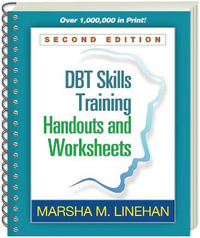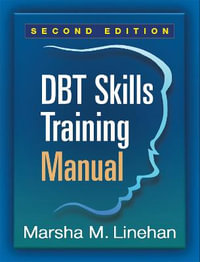
Company Law
2nd Update Edition - An Interactive Approach
By: Ellie (Larelle) Chapple, Alex Wong, Richard Baumfield, Richard Copp, Robert Cunningham
Paperback | 13 May 2022 | Edition Number 2
At a Glance
416 Pages
Revised
32.7 x 23.5 x 5.8
New Edition
Paperback
RRP $124.95
$109.75
12%OFF
or 4 interest-free payments of $27.44 with
orAims to ship in 7 to 10 business days
With an expansive range of digital resources within the interactive e-text, students will be guided through the real-life application of what they are learning, using media such as practitioner interview videos, animated work problems and questions with immediate feedback.
Preface x
About the authors xi
Chapter 1 Business organisations 1
Introduction 3
1.1 Choosing a business structure 3
1.1.1 Sole trader 6
1.1.2 Partnership 6
1.1.3 Joint venture 6
1.1.4 Trust 6
1.1.5 Company 6
1.1.6 Cooperative 6
1.1.7 Incorporated association 7
1.1.8 Hybrid business structures 7
1.2 Sole traders 7
1.2.1 What is a sole trader? 8
1.2.2 Advantages of being a sole trader 9
1.2.3 Disadvantages of being a sole trader 9
1.3 Partnerships 10
1.3.1 What is a partnership? 10
1.3.2 Advantages of a partnership 12
1.3.3 Disadvantages of a partnership 13
1.3.4 Partners’ dealings with each other 14
1.3.5 Partners’ fiduciary and statutory duties 14
1.3.6 Property of a partnership 15
1.3.7 Changes to partners 15
1.3.8 Dissolving a partnership 16
1.3.9 Alternative forms of partnership 16
1.4 Joint ventures 17
1.4.1 What is a joint venture? 17
1.4.2 Advantages of a joint venture 18
1.4.3 Disadvantages of a joint venture 18
1.4.4 The joint venture agreement 19
1.5 Trusts 20
1.5.1 What is a trust? 20
1.5.2 Advantages of a trust 21
1.5.3 Disadvantages of a trust 22
1.5.4 Types of trust 22
1.5.5 Duties, rights, liabilities and powers of trustees 24
1.5.6 Other administrative issues for trustees 26
1.6 Companies 27
1.6.1 Key elements of a company 27
1.6.2 Types of companies in
Australia 27
1.6.3 Advantages of a company 29
1.6.4 Disadvantages of a company 29
1.7 Cooperatives 30
1.7.1 Trading cooperatives 30
1.7.2 Non-trading cooperatives 33
1.7.3 The difference between cooperatives and not-for-profit organisations 34
1.8 Incorporated associations 34
1.8.1 Key features of an incorporated association 36
1.8.2 Advantages of an incorporated association 37
1.8.3 Disadvantages of an incorporated association 37
1.9 Hybrid business structures 37
1.9.1 Why have hybrid business structures? 38
1.9.2 Examples of hybrid business structures 39
1.10 Business names 40
1.10.1 Registration 40
1.10.2 What names cannot be registered? 41
1.10.3 Display and use of the business name 42
Summary 43
Key terms 44
Review questions 45
Applied problems 45
Acknowledgements 47
Chapter 2 Companies and incorporation 48
Introduction 49
2.1 Company regulation in Australia 50
2.1.1 The Corporations Act 2001 (Cth) 50
2.2 Classes of companies 51
2.2.1 Proprietary companies 51
2.2.2 Public companies 52
2.2.3 Listed or unlisted 53
2.2.4 Member liability 54
2.2.5 Comparing company types 55
2.2.6 Conversion between proprietary and public company status 57
2.3 Starting a company 57
2.3.1 Step 1: Choose a company structure 57
2.3.2 Step 2: Choose a company name 58
2.3.3 Step 3: Decide how to operate the company 59
2.3.4 Step 4: Understand the legal obligations 59
2.3.5 Step 5: Obtain consent from officers, members and occupiers 59
2.3.6 Step 6: Formally register the company 60
2.3.7 Step 7: Meet legal obligations regarding use of company name, ACN and ABN 60
2.4 Separate legal entity 61
2.5 Corporate groups 63
2.5.1 Legal issues relating to corporate groups 64
2.6 The corporate veil 64
2.6.1 The legal principle of the corporate veil 65
2.6.2 The corporate veil in relation to corporate groups 66
2.6.3 Lifting the corporate veil 66
2.7 Limited liability 69
Summary 72
Key terms 73
Review questions 73
Applied problems 74
Acknowledgements 75
Chapter 3 Company constitution 76
Introduction 77
3.1 Rules and procedures 77
3.1.1 Companies established prior to July 1998 78
3.1.2 Companies established after July 1998 78
3.2 Replaceable rules 79
3.3 The company constitution 83
3.3.1 When is the company constitution adopted? 83
3.3.2 The contents of the company constitution 84
3.4 Objects clause 85
3.4.1 Practical implications of the objects clause 86
3.5 Who is bound by the replaceable rules and constitution? 88
3.5.1 Contract between the company and each member 89
3.5.2 Contract between the company and each director and company secretary 89
3.5.3 Contract between a member and each other member 90
3.5.4 Remedies for breach of statutory contract 91
3.6 Changing the rules of a company 91
3.6.1 Process to change the constitution 92
3.6.2 The purpose and fairness of the change 92
3.6.3 Application of changes to existing members 93
3.6.4 Entrenched provisions 93
Summary 94
Key terms 94
Review questions 95
Applied problems 95
Acknowledgements 96
Chapter 4 Promoters and pre-registration contracts 97
Introduction 98
4.1 Promoters 98
4.1.1 Identifying promoters 100
4.2 Duties and liabilities of promoters 101
4.2.1 Disclosure 103
4.3 Remedies for breach 105
4.4 Pre-registration contracts 106
4.4.1 The superseded common law 106
4.4.2 Pre-registration contracts under the Corporations Act 107
Summary 110
Key terms 110
Review questions 111
Applied problems 111
Acknowledgements 112
Chapter 5 Companies, outsiders and corporate liability 113
Introduction 115
5.1 How companies exercise their legal capacity and powers 115
5.1.1 Corporate liability 116
5.2 Determining whether a contract is binding by and against the company 116
5.2.1 Entering a contract directly 117
5.2.2 Entering a contract indirectly 119
5.3 Determining whether an agent has substantive authority 120
5.3.1 Actual authority 120
5.3.2 Apparent authority 122
5.4 The indoor management rule 124
5.4.1 Ultra vires 125
5.4.2 Indoor management rule and constructive notice 126
5.5 Statutory assumptions by outsiders in dealings with the company 128
5.5.1 Entitlement to make assumptions 128
5.5.2 Assumptions that can be made 128
5.6 Liability in tort and in crime 131
5.6.1 Primary liability 131
5.6.2 Vicarious liability 132
5.6.3 Liability in tort 132
5.6.4 Liability in crime 133
Summary 136
Key terms 136
Review questions 137
Applied problems 138
Acknowledgements 139
Chapter 6 Membership, members’ powers and dividends 140
Introduction 141
6.1 Members as owners 141
6.1.1 Membership 143
6.1.2 Recording membership 143
6.1.3 Limit on members’ rights 151
6.2 Members’ meetings 152
6.2.1 Types of members’ meetings 153
6.2.2 Calling a meeting 154
6.2.3 Proceedings at members’ meeting 159
6.3 Dividends 164
6.3.1 Entitlement to dividends 164
6.3.2 Payment of dividends 165
6.3.3 Consequence of improper dividend payment 166
6.3.4 Taxation of dividends 166
Summary 167
Key terms 168
Review questions 168
Applied problems 168
Acknowledgements 170
Chapter 7 Corporate governance and company management 171
Introduction 172
7.1 Corporate governance 172
7.1.1 Theories of corporate governance 173
7.1.2 A working definition of corporate governance 174
7.1.3 Corporate governance and company management 176
7.2 Officers 176
7.2.1 Directors 177
7.2.2 Company secretary 179
7.2.3 Senior managers 180
7.3 Roles and powers of directors and members 180
7.3.1 Directors 181
7.3.2 Members’ powers over directors 186
7.4 Appointment, remuneration, resignation, removal 187
7.4.1 Appointment of a director 187
7.4.2 Directors’ remuneration 190
7.4.3 Resignation and vacation of office 191
7.4.4 Removal of directors 191
Summary 193
Key terms 194
Review questions 194
Applied problems 195
Acknowledgements 196
Chapter 8 Directors’ and officers’ duties A 197
Introduction 199
8.1 Officers’ duties 199
8.1.1 Duties under common law and equity 200
8.1.2 Duties under the Corporations Act 201
8.1.3 The interaction of general law and statutory duties 202
8.1.4 Penalties and remedies 203
8.2 The duty of care and diligence 203
8.2.1 Who owes the duty of care and diligence? 204
8.2.2 To whom is the duty of care and diligence owed? 204
8.2.3 Determining whether a director has breached their duty of care 205
8.2.4 The consequences of breaching the duty 205
8.3 The standard of care 206
8.3.1 The minimum standards of care 206
8.3.2 The standards of care by types of officers 207
8.4 Diligence 209
8.4.1 Attending board meetings 210
8.4.2 Delegation 211
8.5 Defences against a breach of duty of care and diligence 212
8.5.1 The business judgment rule in statute 213
8.6 The duty to prevent insolvent trading 215
8.6.1 The duty to prevent insolvent trading under s 588G of the Corporations Act 215
8.6.2 When is a debt incurred? 217
8.6.3 Other requirements as to incurring debts 218
8.6.4 The time at which a company becomes insolvent 218
8.6.5 Reasonable grounds for suspecting insolvency 219
8.6.6 Defences to a breach of s 588G 219
8.6.7 Penalties and remedies 220
8.6.8 A safe harbour against liability for insolvent trading and creditor-defeating dispositions 220
Summary 221
Key terms 221
Review questions 222
Applied problems 222
Acknowledgements 225
Chapter 9 Directors’ and officers’ duties B 226
Introduction 227
9.1 Good faith 227
9.2 Best interests of the company 229
9.2.1 Members’ interests — individuals, classes and as a whole 230
9.2.2 Creditors’ interests 230
9.2.3 Employees’ interests 231
9.2.4 Corporate groups’ and nominee officers’ interests 232
9.3 Proper purpose 233
9.3.1 Determining a breach of the duty of proper purpose 233
9.3.2 Defences for breach of proper purpose 234
9.4 Conflict of interest under general law 235
9.4.1 When a conflict may arise 235
9.4.2 Defences 239
9.5 Statutory provisions relating to conflict of interest 240
9.5.1 Related party transactions 241
9.5.2 Defences 242
9.6 Remedies and penalties for breach of duty 244
9.6.1 Summary of consequences for breaches of directors’ duties 245
Summary 246
Key terms 246
Review questions 247
Applied problems 247
Acknowledgements 250
Chapter 10 Financing a company via equity or debt 251
Introduction 252
10.1 Choosing between equity and debt 252
10.2 Issuing shares 254
10.2.1 Definition of a share 254
10.2.2 Share issues 255
10.2.3 The statutory power to issue shares 256
10.3 Different types of shares 257
10.3.1 Ordinary shares 258
10.3.2 Bonus shares 258
10.3.3 Preference shares 258
10.3.4 Partly paid shares 259
10.3.5 Equity crowd-sourced funding 259
10.4 Debt financing 260
10.5 Debentures 262
10.5.1 Statutory requirements to issue debentures 263
10.5.2 Parties to a debenture 263
10.6 Security for debts 264
10.6.1 Registration of a security 264
10.6.2 Circulating and non-circulating security interest 265
10.6.3 Negative pledges 266
10.6.4 Romalpa clause 267
10.6.5 Voidable antecedent transactions in the event of insolvency 267
Summary 269
Key terms 269
Review questions 270
Applied problems 271
Acknowledgements 271
Chapter 11 Disclosure 272
Introduction 273
11.1 Why disclosure is required 274
11.2 Hard, hybrid and soft law 274
11.2.1 Australian Securities and
Investments Commission 274
11.2.2 Australian Securities Exchange 275
11.2.3 Australian Accounting Standards Board 275
11.2.4 Auditing and Assurance Standards Board 276
11.3 Annual reporting 276
11.3.1 Financial report 278
11.3.2 Directors’ report 286
11.3.3 Auditor’s report 287
11.4 Fundraising 287
11.4.1 Disclosure when issuing securities in the primary markets — s 706 288
11.4.2 Disclosure when selling securities in the secondary markets (secondary sales) — s 707 289
11.4.3 When disclosure is not required for issuing securities 289
11.4.4 Form and content of fundraising disclosure documents 290
11.5 Misleading and deceptive disclosure 292
11.5.1 Liability for defective disclosure 293
11.6 Continuous disclosure 295
11.6.1 Section 674 and ASX Listing Rule 3.1 295
11.6.2 Continuous disclosure and generally available information 298
11.6.3 Continuous disclosure and material effect 298
11.6.4 Liability and offences relating to continuous disclosure 299
11.7 Insider trading 300
11.7.1 Sections 1043A and 1042A 300
11.7.2 Insider trading and information 301
11.7.3 Insider trading and materiality 301
11.7.4 Insider trading and generally available information 301
11.7.5 Insider trading exceptions 301
11.7.6 Liability and offences relating to insider trading 302
Summary 303
Key terms 304
Review questions 304
Applied problems 305
Acknowledgements 306
Chapter 12 Members’ remedies 307
Introduction 308
12.1 Members’ rights and remedies 309
12.1.1 The balance of majority and minority members’ rights 309
12.1.2 Statutory and contractual rights 310
12.1.3 Remedies 310
12.2 Statutory remedies 312
12.2.1 The oppression remedy 312
12.2.2 Winding up a company 316
12.2.3 Statutory injunction 317
12.3 Statutory derivative action 319
12.3.1 Parties that can seek to bring a statutory derivative action 319
12.3.2 Proceedings will be on behalf of the company 319
12.3.3 When the court will grant leave 320
12.4 Personal action 321
12.4.1 A member’s personal rights 321
12.4.2 Statutory contract 322
12.4.3 General law remedies 322
Summary 324
Key terms 324
Review questions 325
Applied problems 325
Acknowledgements 327
Chapter 13 Receivership and administration 328
Introduction 329
13.1 Insolvency 329
13.1.1 The test for insolvency 330
13.2 Receivership 331
13.2.1 Appointment of the receiver 332
13.2.2 Effects of receivership 333
13.2.3 Role of the receiver 333
13.2.4 Powers of the receiver 336
13.2.5 Duties and liabilities of the receiver 336
13.2.6 Termination of receivership 337
13.3 Voluntary administration and small business debt restructuring 337
13.3.1 Appointment of an administrator 338
13.3.2 Effects of administration 339
13.3.3 Role of the administrator 339
13.3.4 Powers of the administrator 339
13.3.5 Duties and liabilities of a voluntary administrator 340
13.3.6 Process of voluntary administration 340
13.3.7 Deed of company arrangement 341
13.3.8 Termination of voluntary administration 341
13.3.9 Small Business Restructuring Plan Part 5.3B 341
Summary 343
Key terms 343
Review questions 343
Applied problems 344
Acknowledgements 344
Chapter 14 Liquidation 345
Introduction 346
14.1 Liquidation or winding up 346
14.1.1 Voluntary winding up 348
14.1.2 Compulsory winding up 349
14.2 Appointment of a liquidator 349
14.2.1 Powers of the liquidator 350
14.2.2 Duties and functions of a liquidator 351
14.3 Property available to a liquidator 351
14.3.1 Voidable transactions 351
14.3.2 Types of voidable transactions 352
14.3.3 Defences for creditors 356
14.4 Final distributions and deregistration 357
14.4.1 Distribution to creditors 357
14.4.2 Deregistration of company 358
Summary 359
Key terms 359
Review questions 359
Applied problems 360
Acknowledgements 361
Appendix A: Retrofit constitution 362
Appendix B: Legislative appendix (e-chapter)
Index 391
ISBN: 9781119871200
ISBN-10: 1119871204
Published: 13th May 2022
Format: Paperback
Language: English
Number of Pages: 416
Audience: College, Tertiary and University
Publisher: John Wiley & Sons Australia
Country of Publication: AU
Edition Number: 2
Edition Type: Revised
Dimensions (cm): 32.7 x 23.5 x 5.8
Weight (kg): 0.84
Shipping
| Standard Shipping | Express Shipping | |
|---|---|---|
| Metro postcodes: | $9.99 | $14.95 |
| Regional postcodes: | $9.99 | $14.95 |
| Rural postcodes: | $9.99 | $14.95 |
How to return your order
At Booktopia, we offer hassle-free returns in accordance with our returns policy. If you wish to return an item, please get in touch with Booktopia Customer Care.
Additional postage charges may be applicable.
Defective items
If there is a problem with any of the items received for your order then the Booktopia Customer Care team is ready to assist you.
For more info please visit our Help Centre.
You Can Find This Book In

Polyvagal Flip Chart
Understanding the Science of Safety (Norton Series on Interpersonal Neurobiology)
Paperback
RRP $57.95
$38.50
OFF

Psychology, 6e ANZ & An Interactive Approach to Writing Essays and Research Reports in Psychology 5e Value Pack
Multi-Copy Pack
RRP $191.95
$161.35
OFF

Diagnostic and Statistical Manual of Mental Disorders 5/e TR (DSM-5-TR)
Diagnostic and Statistical Manual of Mental Disorders
Hardcover
RRP $347.00
$306.90
OFF




















